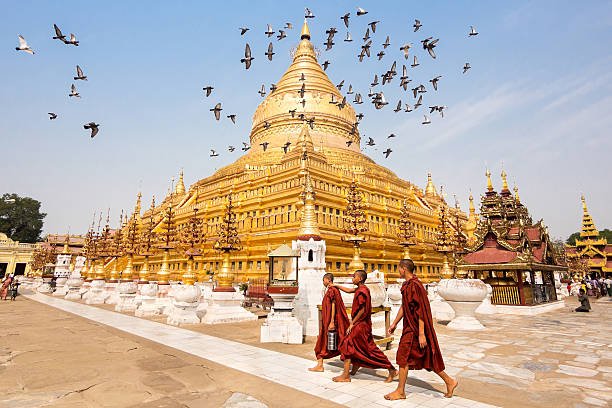Shwezigon Pagoda, Bagan

Shwezigon Pagoda is one of the oldest and most respected temples in Bagan. It is a place where religion, history, and beauty come together. This pagoda had built in the 11th century by King Anawrahta, who helped spread Theravāda Buddhism in Myanmar, the pagoda holds deep spiritual meaning for local people and visitors alike.
According to legend, the king placed Buddha’s relics on the back of his sacred white elephant and let it walk freely. When the elephant stopped and kneeled at a certain spot, and the king believed it was a divine sign. He also ordered the construction of the Shwezigon Pagoda at that sacred place. Since then, it has become a holy site and a center for Buddhist worship in the region.
The golden stupa of Shwezigon, surrounded by smaller shrines and statues, became the model for many later temples in Bagan. Its graceful shape and shining gold surface make it one of the most beautiful sights in the area. Gold leaf has been added by devotees over centuries, showing their faith and respect.
Inside the temple grounds, there are four large Buddha statues facing in four directions. One of the statues is especially unique—it appears to change its facial expression depending on where you stand. This mysterious feature attracts and amazes many visitors. Shwezigon is not only a famous landmark but also a living spiritual place where monks and pilgrims come to pray, meditate, and feel peace.
